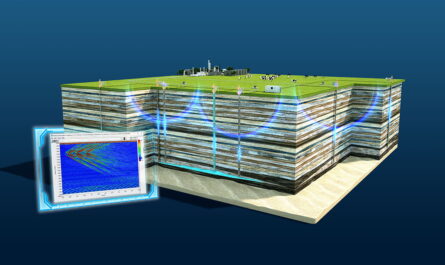Just as WiFi technology uses radio waves to transmit data wirelessly, LiFi uses visible light communication (VLC) for high-speed communication. This new communication technology provides several benefits over traditional WiFi and opens up new opportunities.
What is LiFi technology?
LiFi or Light Fidelity refers to visible light communication technology for wireless transmission of data through illumination. It uses LED bulbs for data transmission in a similar way to WiFi, which uses radio waves for wireless networking. LiFi is a bidirectional, high-speed and fully networked wireless communication technology.
LiFi works by switching the state of an LED light on and off rapidly and imperceptibly to humans. The changes are detected by a photodiode that is equipped with the latest technology. The photodiode converts light into an electric current faster than the human eye can follow, and detects whether the light is on or off, thereby decoding the transmitted data. This way high-speed internet connectivity can be delivered without any significant disruption to the light.
Key benefits of LiFi technology
LiFi technology offers several advantages over traditional WiFi:
Higher Speed: LiFi has a much wider bandwidth than WiFi and is capable of delivering speeds over 100 times faster than WiFi. While today’s fastest WiFi can reach up to 1 Gbps, LiFi technology is capable of delivering speeds over 10 Gbps. This high speed will be crucial for handling data-heavy applications in the future like virtual/augmented reality.
Improved Security: Since light cannot pass through walls, LiFi provides better security than radio-based WiFi. The signal is confined to the room only and does not leak outside ensuring better cyber security. This makes it very suitable for security-conscious environments like hospitals, banks, and government offices.
Compatible with Existing Infrastructure: Light Fidelity can co-exist with the existing lighting infrastructure seamlessly. It does not require installation of additional network cables or access points everywhere. Given that nearly every building today uses some form of electric lighting, transition to LiFi networks can be faster.
No Interference: LiFi operates in a different light spectrum than WiFi which uses radio waves. This means no interference between the two networks and ability to deliver dual high-speed wireless connectivity. In comparison, crowded radio spectrum leads to slowed WiFi speeds.
Abundant Spectrum: There is 1000x more spectrum available in the light spectrum than in the radio frequency spectrum. This abundant unregulated and license-free bandwidth will allow us to meet increasing connectivity demands going forward.
Green Technology: LiFi uses visible light which is more eco-friendly than radio waves and LED bulbs consume 80-90% less energy than traditional lighting solutions. This makes LiFi a greener wireless technology supporting sustainability goals.
Applications of LiFi technology
With the benefits offered, LiFi holds great potential across multiple industry sectors:
Indoor Connectivity: LiFi can deliver high-speed wireless access to smartphones, laptops, tablets and other devices in offices, homes, libraries, auditoriums etc. It is ideal for tackling the growing demand for indoor data connectivity.
Automotive: In-car LiFi networks can enable functions like streaming media, receiving diagnostics, software updates seamlessly without driver distractions. LiFi headlights and tail lights can double up as transmitters.
Aerospace: LiFi is an ideal solution for aircraft cabins offering passengers high-speed internet access without interfering with flight operations or other on-board critical systems.
Underwater Communications: Light travels much farther in water than radio waves making LiFi suitable for transmitting data to/from divers, autonomous underwater vehicles and other ocean devices.
Hospitals: LiFi provides interference-free data connectivity in critical areas like operating rooms without affecting sensitive medical equipment. The signals are also contained ensuring better patient privacy.
Streetlights LiFi: Streetlight LiFi networks can deliver connectivity to pedestrians using their smartphones, enable smart city applications and even power vehicle-to-infrastructure communications for self-driving cars in the future.
Industrial Uses: Reliable, high-speed and secure LiFi networks can improve productivity in manufacturing facilities by enabling functions like automated quality checks, real-time analytics, personnel tracking and more.
With its unique benefits over traditional WiFi, LiFi has great potential to become the next generation wireless technology supporting our connectivity needs. Though still at a nascent stage, successful trials indicate that commercialisation of LiFi networks on a large scale is not far away. As lighting infrastructure gets integrated with connectivity, LiFi is expected to revolutionize how we access the internet in both indoor and outdoor spaces in the future. Truly, LiFi technology represents one of the most promising technologies of the new decade.
Note:
1. Source: Coherent Market Insights, Public sources, Desk research
2. We have leveraged AI tools to mine information and compile it



